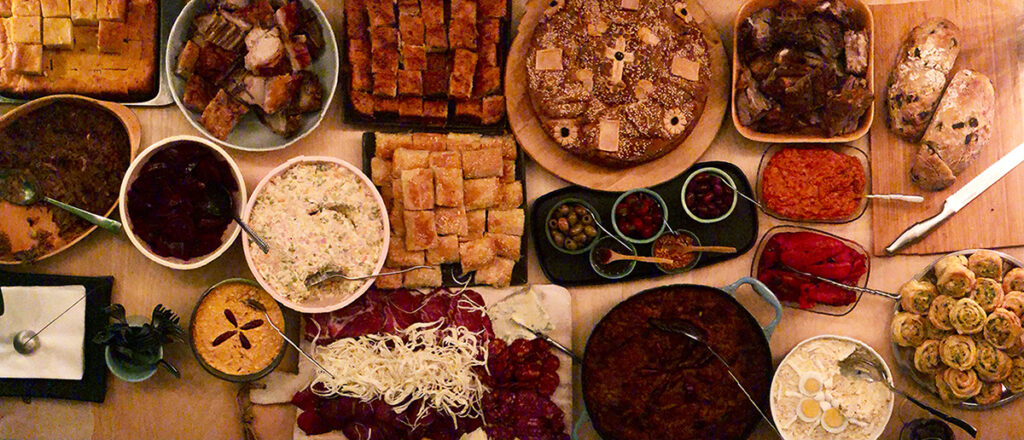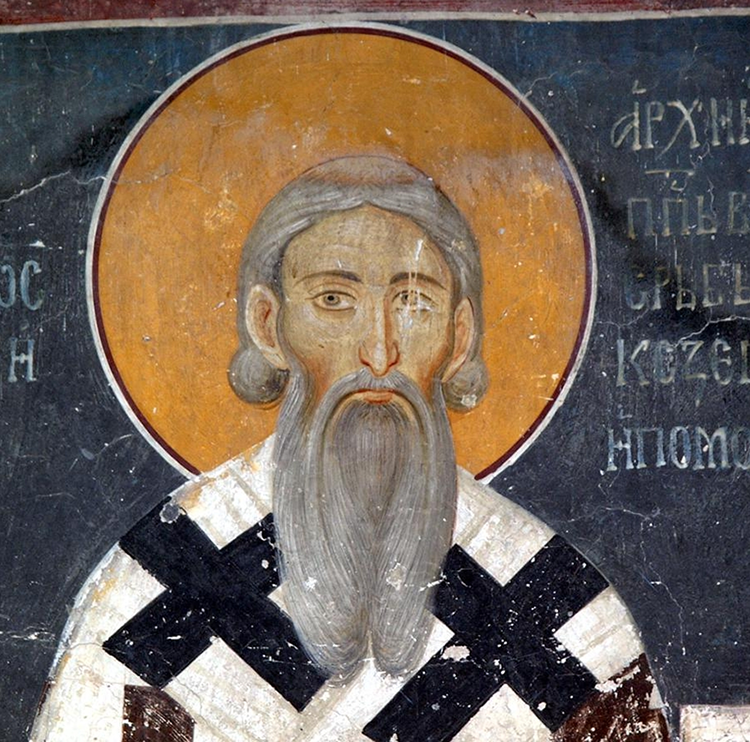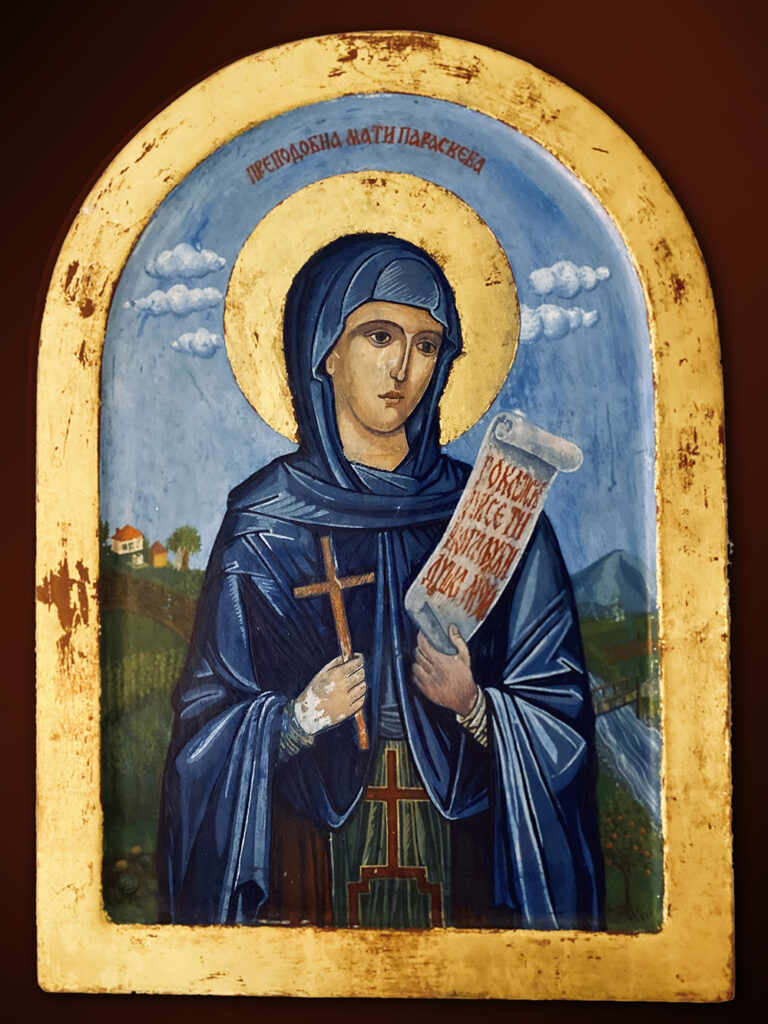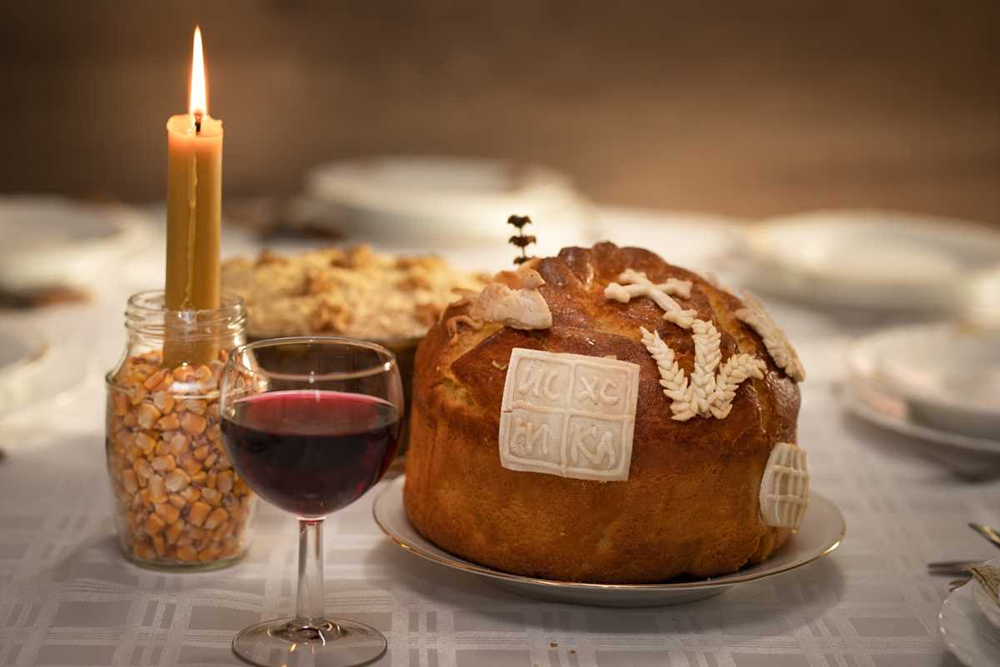The celebration of family Patron Saint’s Day which is called Krsna Slava or Slava is a unique Serbian custom and phenomenon in Orthodox Christianity. It is observed annually, on the feast of the saint to whom Slava is dedicated, by all members of the same family or community, in honor of their protector saint. This centuries-old custom clearly reflects the self-consciousness of the Serbian people and says much about the importance of preserving the national tradition. Slava is the most important family holiday of every Orthodox Serb, honoring the heavenly patron of the whole family through generations.
This celebration originated in pre-Christian times, when each family had its particular family God. Later, when Serbs became Orthodox Christians, they transferred this observance to Christian saints, selecting a saint with special meaning to the family or the saint whose celebration day was nearest to the day when the family accepted Christianity.
Throughout history, family life and preserving tradition were always important to Serbs. Saint Sava (the founder of the Serbian Orthodox Church) in his reformatory work, ultimately abolished blood sacrifices and established three Christian symbols of Slava: Slava Candle (slavska sveća), Slava Wheat (koljivo or žito), and Slava Bread or Cake (slavski kolač).
Every part of Slava ritual embodies the life, passion and resurrection of the Lord Jesus Christ. Wheat (panagija) has been established as the most holy and symbolic secret of nativity and life. Everything is born from seed. Therefore, in the Nativity, the mystical commandment of God is fulfilled. The single wheat grain obtained its name panagija (All Holy Mother, giver of life) from the Greek word panagion. Wheat was also the main source of existence. Even today, Slava ritual still involves a series of beautiful symbols, such as the blessing of the wheat and the breaking of the bread.

The most common way of celebrating Slava involves the host going to church to attend the Holy Liturgy, and bringing Slava Bread (slavski kolač), a bowl of cooked wheat sweetened with honey or sugar (koljivo or žito) and the Book in Memoriam (čitulja) from which, during the Holy Liturgy, the priest reads the names of the host’s deceased relatives.
The priest also cuts and blesses the special Slava Bread, according to a prescribed rite. The bread is usually made in the form of a large prosphora with the words IS XC and NI KA. On the table next to Slava Bread, there is an icon of the patron saint, Slava Candle, incense, red wine, and žito (cooked ground wheat with nuts).
During the ceremony, the priest reads prayers and blesses the bread, žito, and the wine, sings troparia and the hymn Rejoice, O Isaiah!. The host and the priest together rotate Slava Bread and break it in two, saying:
“Christ is in our midst”
“He is and ever shall be.”
Meanwhile, at home, the table is prepared for the feast. Returning form church, the host places Slava Bread and the wheat on the table and lights a candle, which burns all day. The host (always the male head of the household) prays to God and his patron saint, and then serves his guests. The host is never seated during the dinner. Every guest receives a small portion of the blessed Slava Bread and the wheat (žito). The distinctive feature of this day is that none of the guests is specially invited, because they come as a matter of course. Every one close to the family, who doesn’t celebrate Slava on the same day, is automatically invited to come at any time of the day. It often happens that large families celebrate their Slava for three days.

Krsna Slava is one of the most important Serbian holidays, which is also celebrated by various state institutions. For instance, the official holiday of all Serbian students, regardless of their places of residence, is the feast of St. Sava, the enlightener and first Archbishop of Serbia, the founder of the independent Serbian Church (1219). The destiny of the Serbian nation, its mentality, spiritual and cultural development, along with the formation of its statehood are inseparably linked to the personality of St. Sava. St. Sava, the most important person in Serbian history, was the royal son of a ruler in medieval Serbia, Stefan Nemanja. The Nemanjić Dynasty celebrated Krsna Slava in honor of the holy Protomartyr Archdeacon Stephen.

The capital of Serbia, Belgrade, celebrates Krsna Slava in honor of the Ascension of the Lord (Spasovdan). This is a national holiday when the army and the entire Serbian society participate in the celebration. Republika Srpska in Bosnia and Herzegovina marks its Krsna Slava in honor of the holy Archdeacon Stephen (January 9th, according to the new calendar). On this day, a solemn military parade takes place, and many cultural events are held. The Patriarch of Serbia also comes to honor this day and share the festive occasion with his flock and the government of Republika Srpska.
It is thanks to the tradition of celebrating Krsna Slava, this ancient Serbian custom, that the spiritual memory of the Serbian people has been preserved and their national self-consciousness strengthened for many centuries. This allowed the Serbs to remain faithful to Orthodoxy and preserve their national identity even in the Communist times of the second half of the twentieth century, despite the persecution of the Church and the clergy (especially in Montenegro) and the suppression of national customs and traditions. When people had no opportunity to openly confess their faith and go to church, there were those who continued to commemorate the heavenly patron of their family. History knows other examples of various restrictions on the celebration of Slava, for instance during the times of Turkish occupation, or even bans in the times of Austrian and Venetian rule over parts of the Serbian nation, which were imposed under the pretext of festivities being excessive, but in reality, motivated by the desire to subject the Slavic populations of these regions to the Vatican’s influence.

Interestingly, this special Serbian tradition has become noticeable outside the Serbian world – the tradition of celebrating Krsna Slava was included in the UNESCO World Heritage in the sphere of education, science and culture as a Serbian intangible cultural heritage.
Today the vast majority of Serbian people in Serbia and diaspora (citizens of Serbia who live abroad) celebrate Krsna Slava! They are preserving their faith of St. Sava, their national and Christian roots, the beauty of Orthodoxy.


